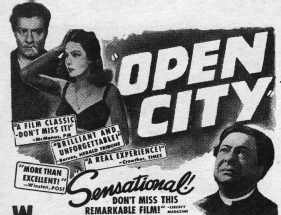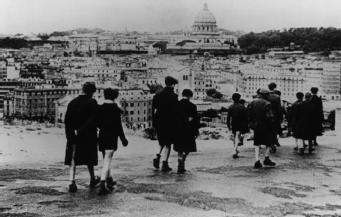Rome, Open City: Examining the legacy after seventy years
An international conference
Department of Film and Television Studies,University of Warwick
Thursday 12 November - Friday 13 November 2015
Organised by Louis Bayman, Stephen Gundle, Karl Schoonover


The release of Roberto Rossellini’s Rome, Open City in September 1945, just months after the Liberation of Italy, is a landmark in both cinema and Italian history. The film’s tale of popular resistance in Nazi-occupied Rome brought Italy to international audiences. It announced a new aesthetics of cinema - neorealism - that would have a global impact, attracting attention and often controversy for its bold assertion of the necessary relationship between art and politics. The film is a central reference point for cinematic realism and aesthetic radicalism, influencing movements from the French New Wave to Brazilian Cinema Novo, British social realism and Dogme 95. It remains a key influence for contemporary filmmakers as well as an important reference point in areas as diverse as cultural geography, gender studies, performance, historiography, aesthetic philosophy, and the study of war, fascism and torture.
Keynote speaker: David Forgacs, Guido and Mariuccia Zerilli-Marimò Chair in Contemporary Italian Studies, New York University, USA
Additional confirmed speakers include:
Stella Bruzzi, University of Warwick, UK
Emiliano Morreale, Director of the Cineteca Nazionale, Rome, University of Turin
Sergio Rigoletto, University of Oregon, USA
Vanessa Roghi, La Sapienza, Rome, Italy
Organised with the particpation of DAMS, Dipartimento di Studi Umanistici, Universita' di Torino.
Co-sponsored by
![]()
